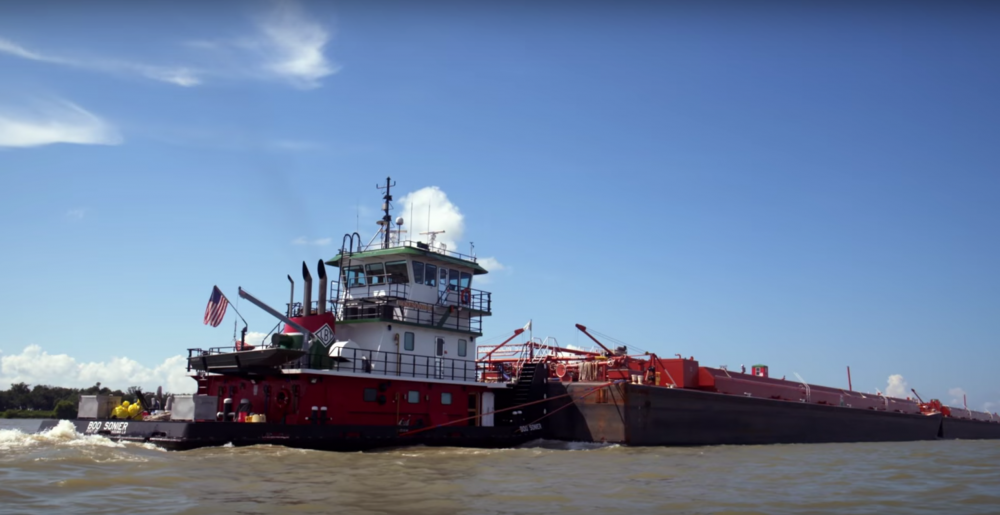New Harmony High: A Floating School for the Gulf Coast
Sarah Dupee looks at the plans for New Harmony High, a high school in Plaquemines Parish that will float on the Mississippi River.

A still from a video about the plans for New Harmony High in Plaquemines Parish.
“How would you rethink high school in America?”
And what happens when you open up this question to Americans across all 50 states and from different backgrounds and walks of life?
Pushing the envelope and generating fresh ideas from outside the traditional policy realm appear to have been the goals of XQ: The Super School Project. The open-call competition was launched in 2015 by business woman, philanthropist, and widow of Steve Jobs, Laurene Powell Jobs, and her organization, Emerson Collective, with the purpose of spurring innovative solutions in public education. The competition came to a close this past fall, with a panel of judges awarding the ten top school-design proposals with $10 million each to turn their dream school into a brick-and-mortar reality.
In South Louisiana, a convergence of educators, community leaders, designers, planners, social innovators, and environmental activists, among others, came together to consider what a next-generation high school might look like in this region. Their resulting, award-winning school design is so out of the box that “brick-and-mortar” hardly even applies. It trades the traditional school campus, with four-walled buildings and classrooms, for a complex of barges moored near the mouth of the Mississippi River in Plaquemines Parish.
The concept of a floating school on a disappearing coast—to be named New Harmony High—makes a very visible statement. It serves as a reminder that the physical spaces in which we live and learn are inextricably bound to their surrounding environments. It suggests that students can and should be empowered to learn from and address the environmental and economic challenges right in their own backyard, in conjunction with local experts, organizations, and industries. New Harmony plans to leverage community involvement and student-centered learning. School leaders are committed to engaging local businesses and organizations in conversations about how the school can partner with what they’re doing, as well as tapping into the interests and goals of each individual student.
During the first academic year, 2018-2019, the school will enroll 40 freshmen from across Louisiana. Instruction will engage traditional academic disciplines while also developing critical problem-solving skills through hands-on application and internships. Students will be led to apply their lessons directly to the surrounding community, with a focus on “the issues of coastal protection and restoration and their effects on Gulf Coast economies, ecosystems and culture.” Beyond the school’s central “campus,” there will be internship sites and real-world “classrooms” ranging from fishing vessels to scientific laboratories and professional offices.
While climate change and coastal loss might remain abstract issues to many across the nation and world, the Louisiana Gulf Coast is on the front lines, uniquely positioned to serve as a global leader in issues of coastal protection, restoration, and management. Over the past 80 years, Louisiana has lost nearly 1,900 square miles of land—an area that is roughly the size of Delaware.
New Harmony High is stepping up to harness these opportunities and empower today’s youth to be active, effective participants in the world around them. In a region that is no stranger to devastating environmental forces and rising waters, a floating school on the Gulf Coast is at once compelling, imaginative, and practical.



